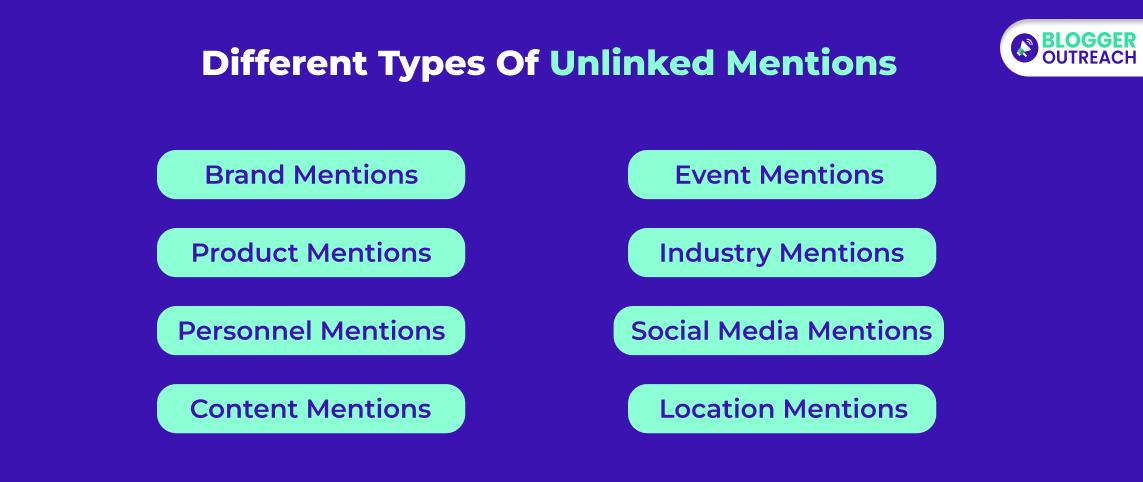Table Of Content
It is important to build backlinks, as they carry ranking signals. However, it is even more important when the backlink is from a reputable source.
So, unlinked mentions = missed opportunity.
Unlinked mentions are mentions of a brand or website that do not include a backlink. They can be helpful for generating backlinks as they provide an opportunity to link back to the source.
For example, if someone mentions your brand in a post, but does not mention you there…In this case, you can reach out to them and ask them for a backlink. This process is known as unlined mentions.
So, nobody wants a missed SEO opportunity. This article is for those who want to capitalize unlinked mentions and build a robust backlink profile.
Table Of Contents
- Types of unlinked mentions.
- Sharing proof that unlinked mentions are important (Google’s stance).
- How to find unlinked mentions.
- 2 Simple steps to convert unlinked mentions into backlinks.
- When you should overlook unlinked mentions
Different Types Of Unlinked Mentions

Ensure that you understand the different opportunities for unlinked mentions before taking advantage of them.
(i) Brand Mentions
Instances where your brand name is mentioned without a link to your website. These could occur in articles, blog posts, social media posts, or other online content.
(ii) Product Mentions
Similar to brand mentions, these involve the mention of your products without accompanying links. In reviews, product comparisons, or other relevant content, this can happen.
(iii) Personnel Mentions
When key individuals associated with your business, such as founders or executives, are mentioned without a link to their profiles or the company’s website.
(iv) Content Mentions
References to your content, such as blog posts, articles, or infographics, without the inclusion of hyperlinks. These mentions can occur on various online platforms.
(v) Event Mentions
If your company hosts or sponsors events, mentions of these events without links to your website present opportunities for link building.
(vi) Industry Mentions
References to your industry or niche where your company is relevant but not linked. This could happen in industry reports, news articles, or other relevant publications.
(vii) Social Media Mentions
Mentions on social media platforms without accompanying links. These can be monitored on platforms like Twitter, Facebook, Instagram, and LinkedIn.
(viii) Location Mentions
If your business operates in specific locations, mentions of these locations without links can be potential opportunities for local SEO.
The content creators or website owners may be willing to link back to your site if you express appreciation for the mention. When relationships are built and additional value is provided, link acquisition is more likely.
Moreover, Google Alerts, Mention, and backlink analysis tools can help you identify and track unlinked mentions.
Clear Evidence That Unlinked Mentions Make Sense
In 2017, Google experts stressed quality content and online mentions’ significance.
Gary Illyes In His Keynote Vouched For Unlinked Mentions.
If you publish high-quality content that is highly cited on the internet — and I’m not talking about just links, but also mentions on social networks and people talking about your branding, crap like that. Then you are doing great.”
Google’s Panda Patent Has Also Endorsed Unlinked Mentions.
“The system determines a count of independent links for the group (step 302). […] Links for the group can include express links, implied links, or both. […] An implied link is a reference to a target resource, e.g., a citation to the target resource, which is included in a source resource but is not an express link to the target resource. Thus, a resource in the group can be the target of an implied link without a user being able to navigate to the resource by following the implied link.”
Unlinked Mentions – How To Find Them?
We are now going to examine how to find mentions that are not linked.
For this, we have found a tool that is quite easy to use. The tool is BrandMentions.
Firstly, visit their website and create your account by adding basic details like:
- Name
- Email address
- And set a password
After logging in, you’ll be offered a free trial of 7 days. The next step is to search for unlinked mentions.

Step-1:
The first thing you need to do is figure out your brand keywords. You can use your brand name, product name, service name, website address, or even your CEO’s name.
Put your keyword and select its type. In the example below we have used an exact match keyword. In the example below, we have used ‘Forbes’ as our keyword.

Step-2:
Select the source you wish to track. All you have to do is click the on/off buttons to select a source and turn it off.

Step 3:
Set the language and the countries you want to search from.

After you start your project, click on Start Project. Then, you will come across the results where your brand was mentioned.

In The Above Example, We Clicked The First Link, And Here Is The Result.

Apart From This Tool, There Are More Tools To Use
- Ahrefs Content Explorer: Ahrefs’ Content Explorer lets you track down mentions of your brand that don’t link back to your site across the web.
- SEMrush Brand Monitoring: This tool detects both linked and unlinked brand mentions, enabling you to prioritize your outreach efforts by understanding the domain authority.
- Brand24: Brand24 is a media monitoring tool that finds unlinked brand mentions. It allows you to define keywords connected to your brand, monitor mentions on social media platforms, and discover new mentions in the Mentions Tab.
- Google Alerts: Google Alerts is a free service that sends email notifications when your brand or keywords are mentioned on the web. It can help you monitor unlinked mentions and stay updated on new opportunities.
2 Simple Steps To Convert Unlinked Mentions Into Quality Backlinks
The web mentions your brand, but there’s a catch. There are no backlinks associated with these mentions. We’ll show you how to turn unlinked mentions into valuable backlinks with two straightforward steps.
Step 1: Locate And Connect
Before diving into outreach, track down the right person to contact. Skip the generic ‘contact us’ form; you need the individual with the authority to add your backlink.
Utilize Tools Like Snov.io:
Connect with LinkedIn for accurate contact information. It’s important not to rush this process; patience is your ally.
Target Strategically:
Next, avoid mass emails; focus on one person at a time. If unsuccessful, gracefully move on to the next contact.
In contrast to mass emails, targeted emails are more likely to be taken seriously. Additionally, it is important to take the time to build relationships with the contacts you are making. Because it will help to ensure that the backlink is added successfully.
Step 2: Craft A Compelling Pitch
Now that you have your list, it’s time to reach out effectively.
Create a compelling pitch and your outreach message needs to stand out. If you are hesitant about what will work – trial and error is your friend; find what works best.
Dos And Don’ts Of Pitching
Let’s take a look at what makes a pitch good and what makes it bad. Why are they important? Because when you know what to avoid and what needs to be followed – chances will become higher that you will better convert those unlinked mentions into backlinks.
❌Don’t Be Pushy! A gentle nudge is better than a forceful push. Pushiness might lead to the removal of your mention.
✅Offer Additional Value. Basically, ethical value propositions work wonders. Provide a reciprocal backlink if relevant to your brand.
✅Always be polite. Respectful communication is key. Also, compliment their website and express gratitude.
✅Personalize Your Pitch. So, tailor your pitch to the specific recipient. Genuine personalization beats generic messages.
❌Don’t: Wait Too Long to Follow Up. A timely follow-up is a gentle reminder. Keep your backlink request on their radar.
✅Stay Organized. In fact, use a spreadsheet to track your outreach. Include priority, contact details, and responses.
✅It is imperative to be ethical. So, ensure your value proposition is ethical. Offer to identify and rectify website flaws diplomatically.
✅ Don’t forget to express your gratitude. A simple ‘thank you’ goes a long way. Appreciate the website owner’s time and cooperation.
✅Stay Persistent. Persistence pays off; don’t give up too soon. Gentle reminders keep your request in focus.
✅Highlight the mutual benefits. Demonstrate how the backlink benefits them. Essentially, it is better to collaborate when there are mutual gains.
❌Avoid lengthy paragraphs; get to the point – be concise. Moreover, steer clear of complex sentences.
When You Should NOT Pay Attention To Unlinked Mentions

It’s important to deal with unlinked mentions, BUT there are some situations where you shouldn’t.
🚩If a website is expressing negative sentiments about your brand, it might be wise to avoid engaging. Negative associations can potentially harm your brand image further.
🚩Private blog networks (PBNs) are networks of websites created for the sole purpose of manipulating search engine rankings. If your unlinked mention is within a PBN, it’s advisable to steer clear. Search engines are becoming more adept at identifying and penalizing PBNs, and associating with them can harm your website’s SEO.
🚩Similarly, avoid link farms, which are collections of websites created exclusively for link building. Links from link farms are often of low quality and can lead to penalties from search engines.
Bottom Line
Unlinked mentions are highly effective link building tactics if the links come from RIGHT people. Regarding the same, we have already mentioned what you need to avoid.
Identification and outreach are done – what’s next?
It’s time to be patient and secure those links. Wishing you all the best for leveraging unliked mentions.
Read More:








